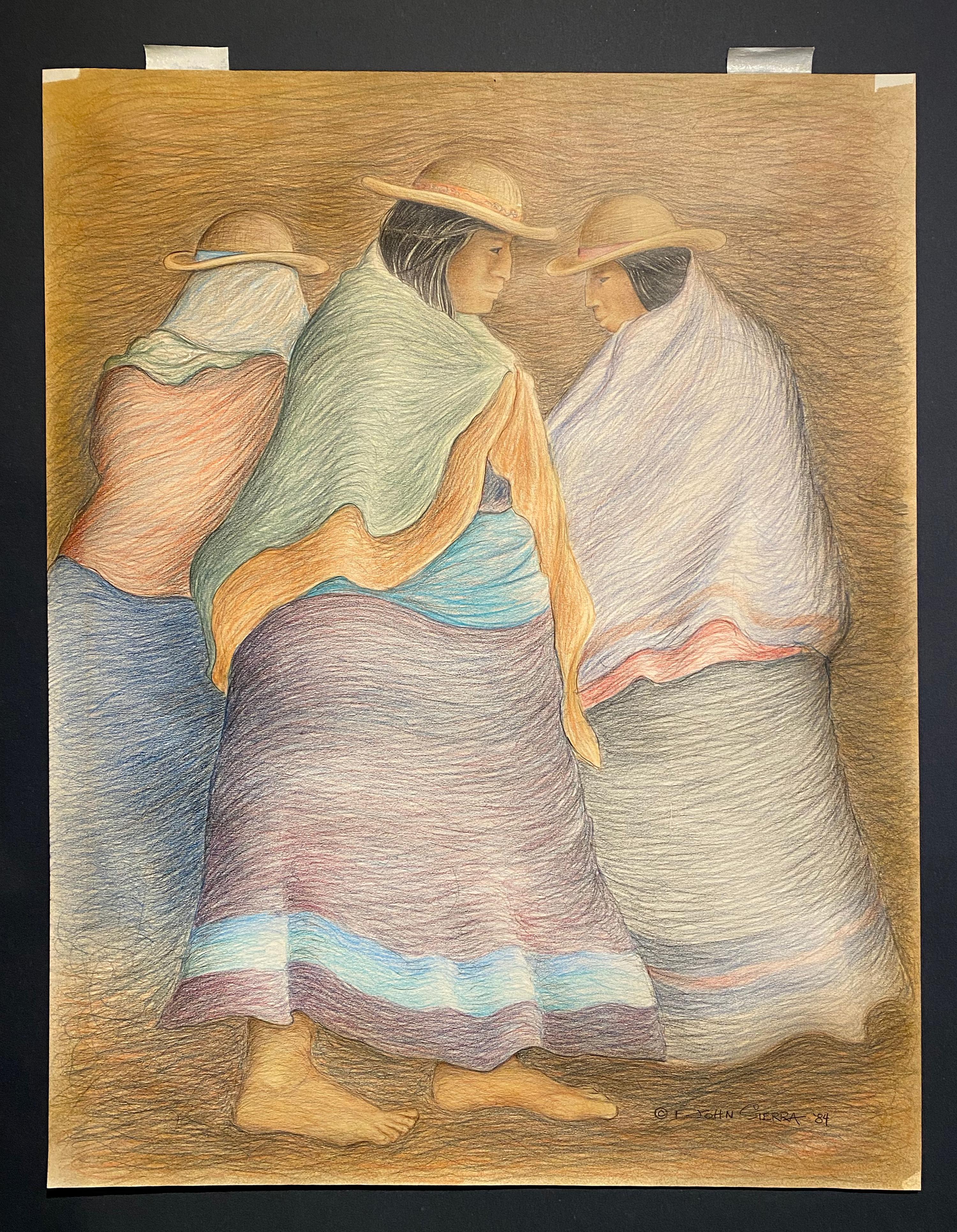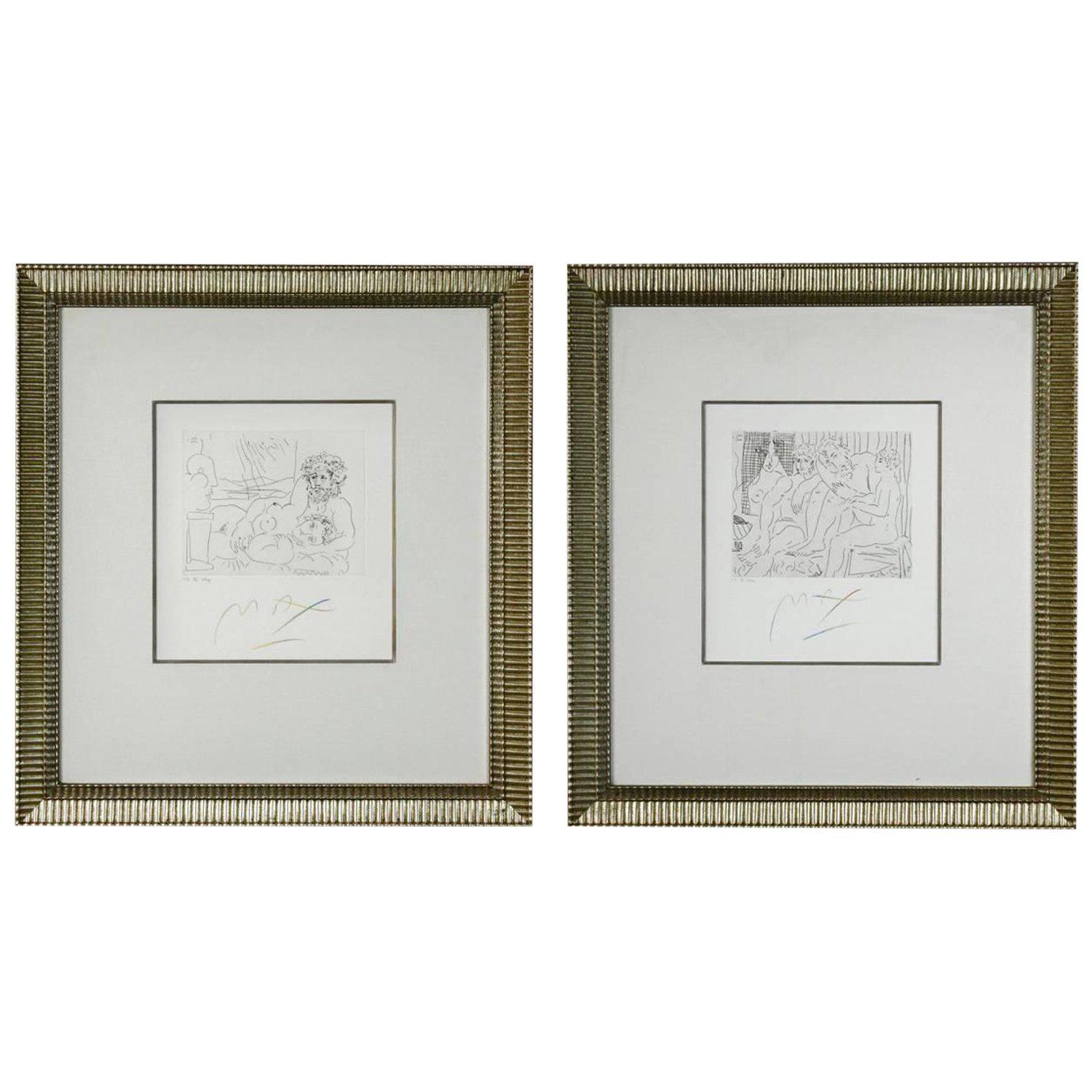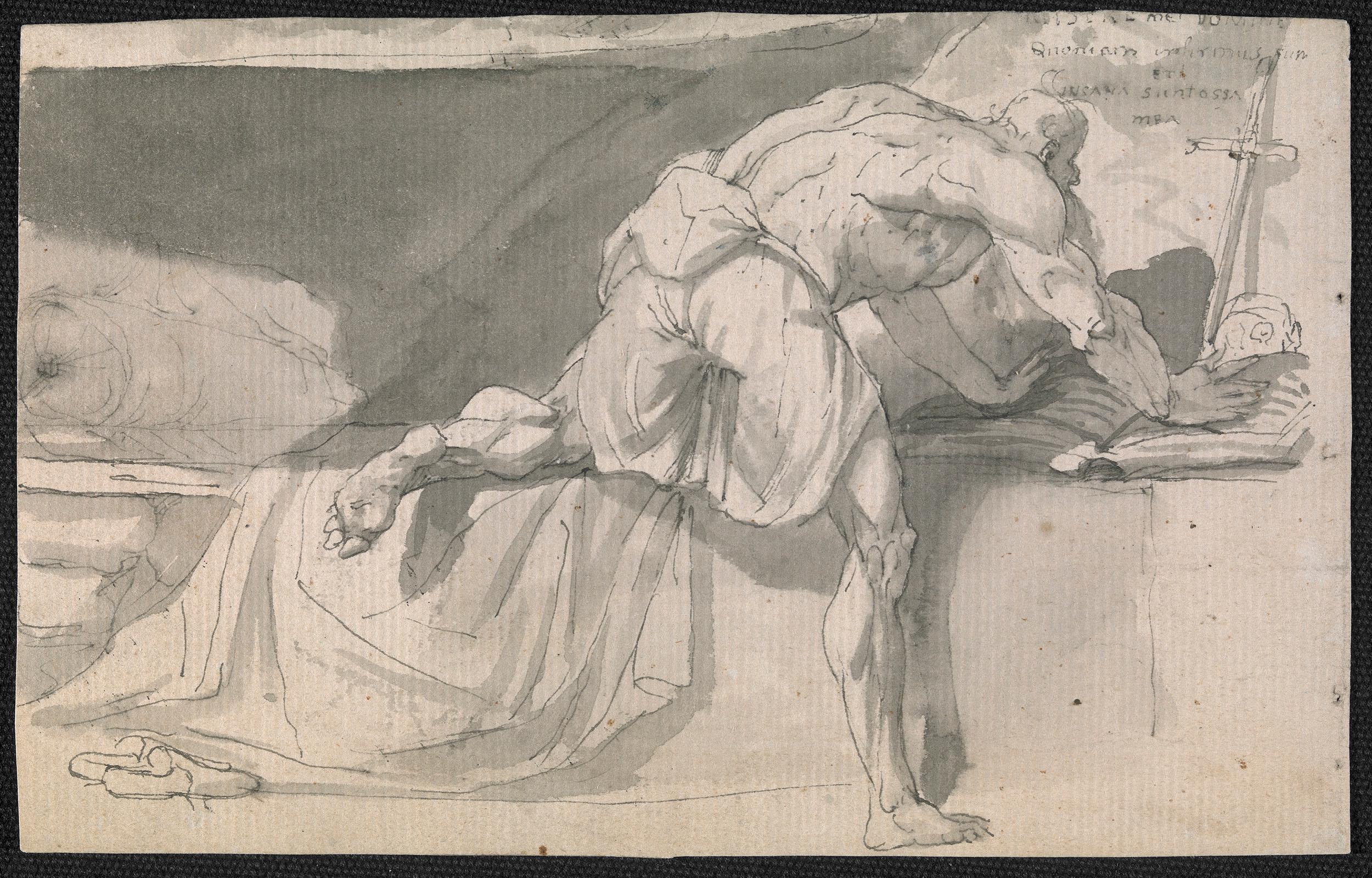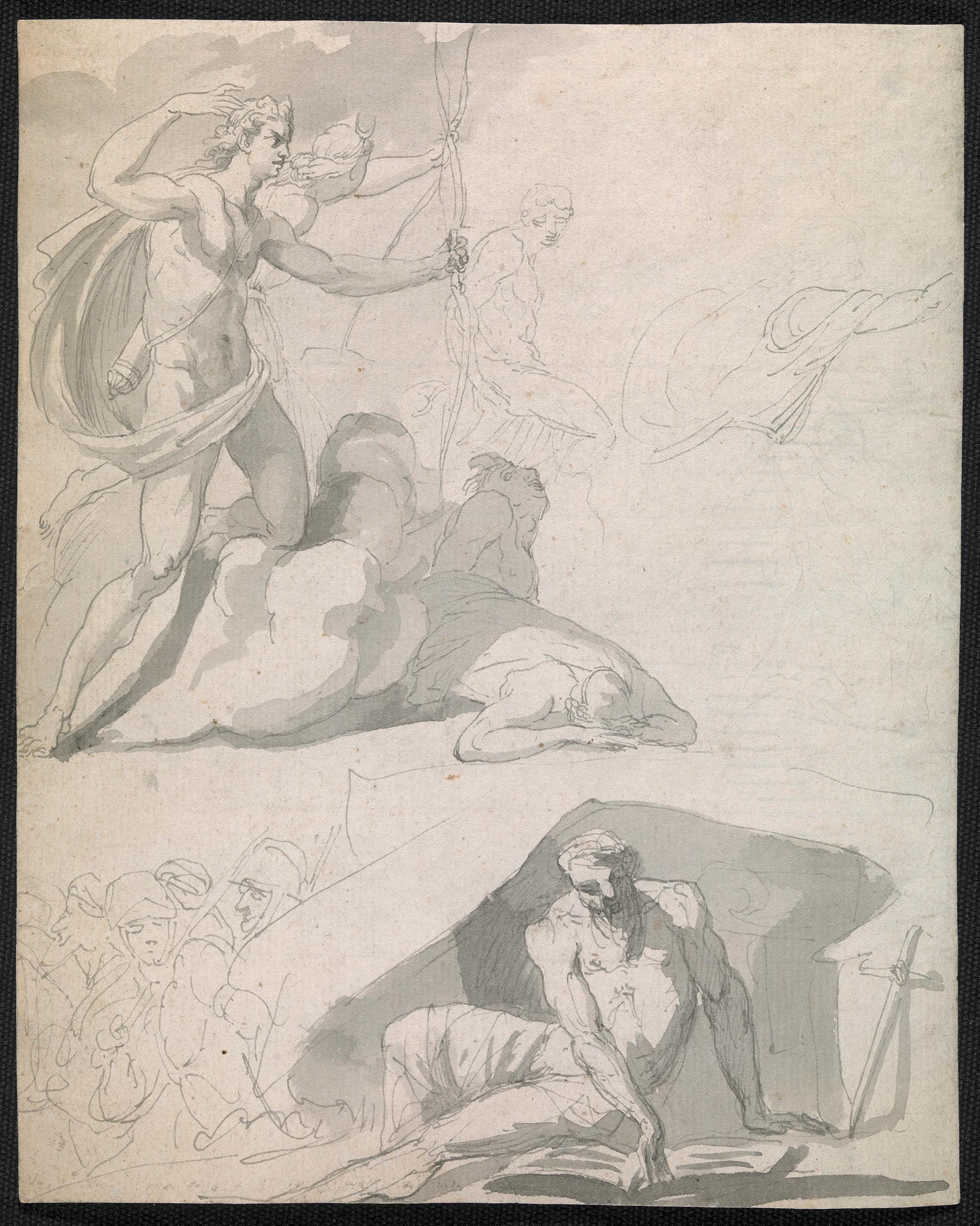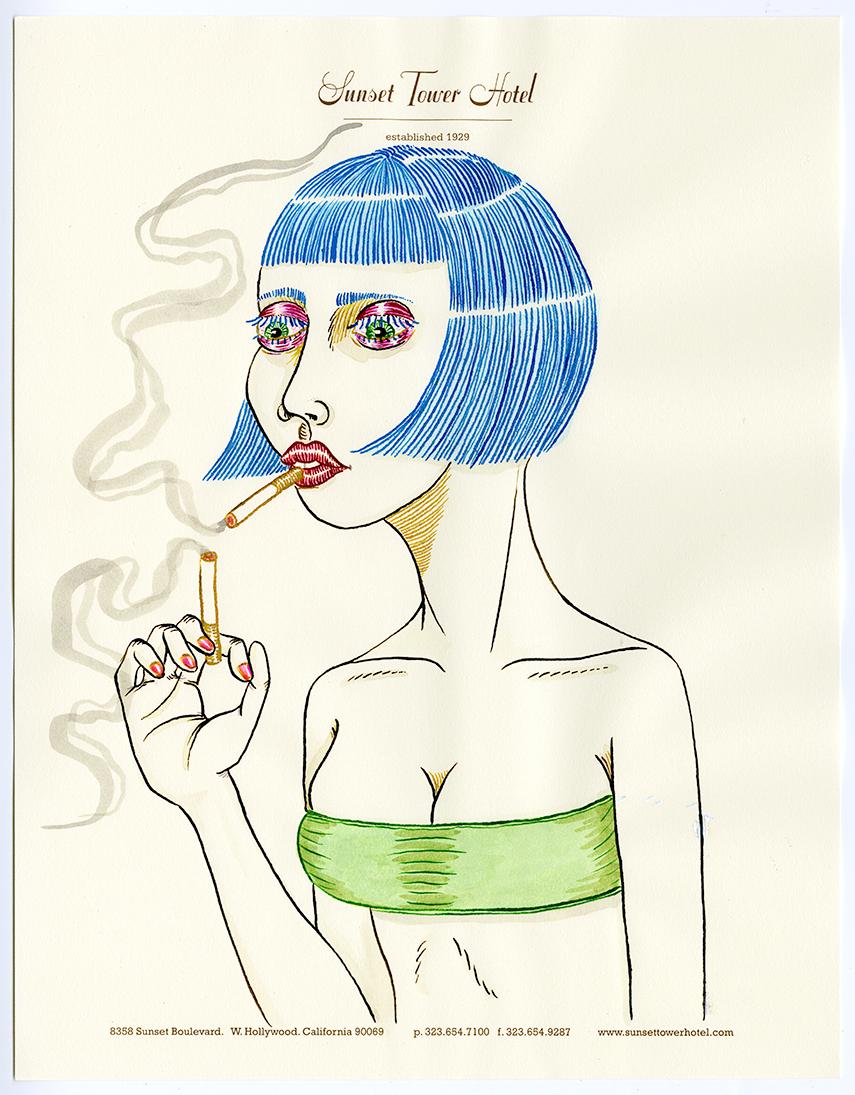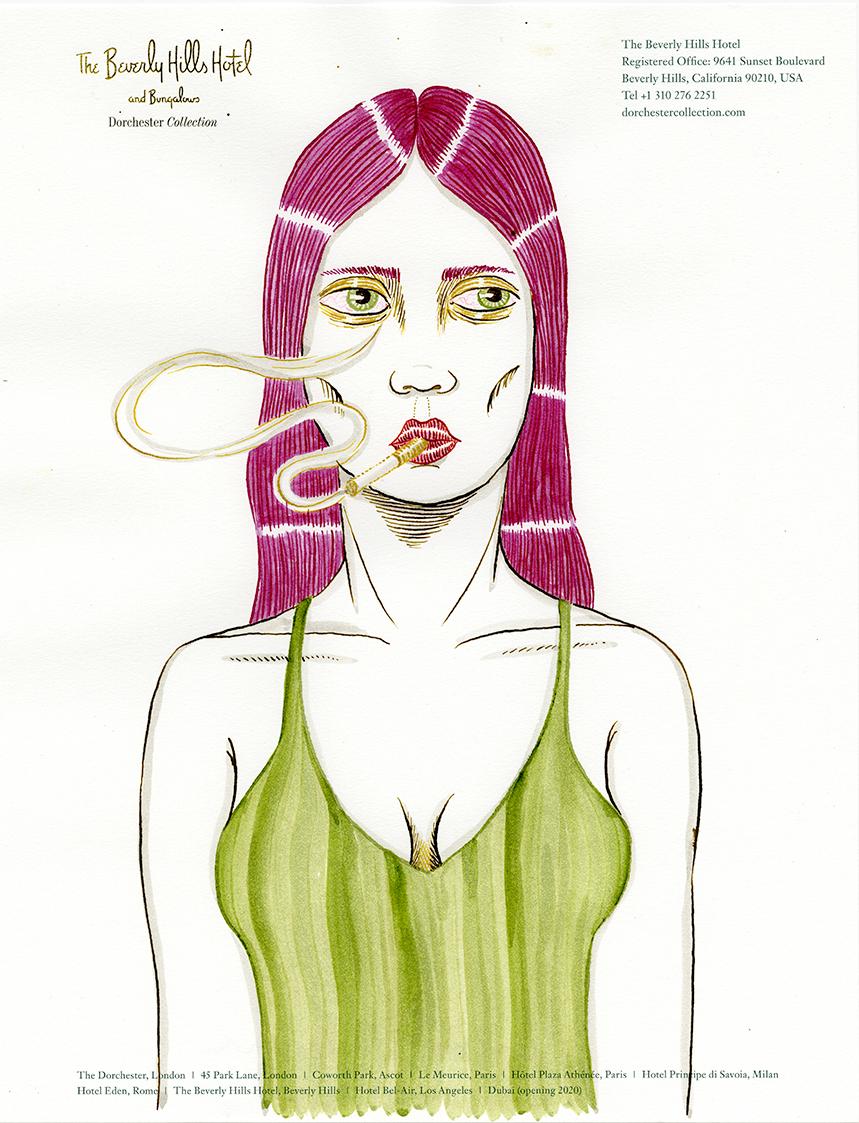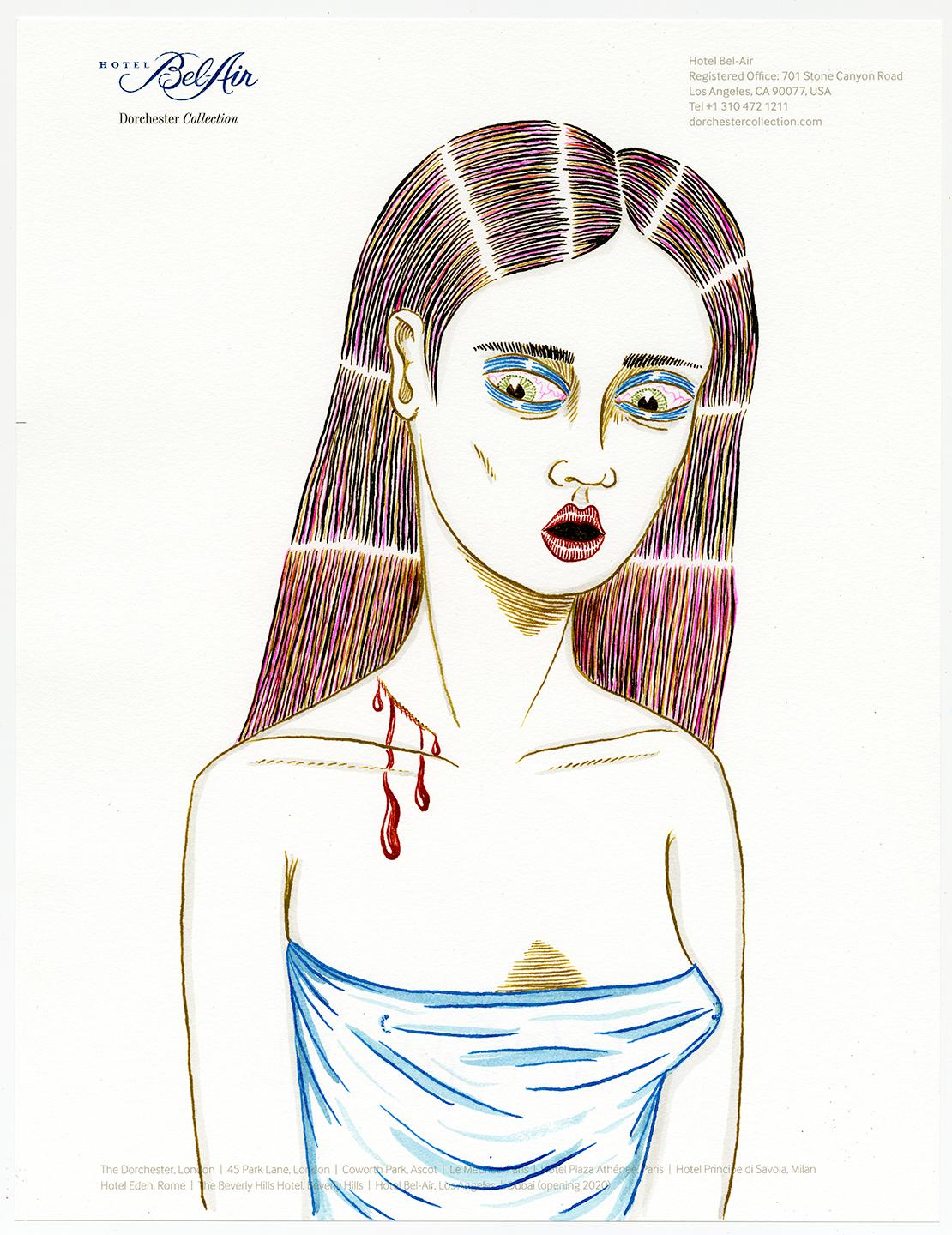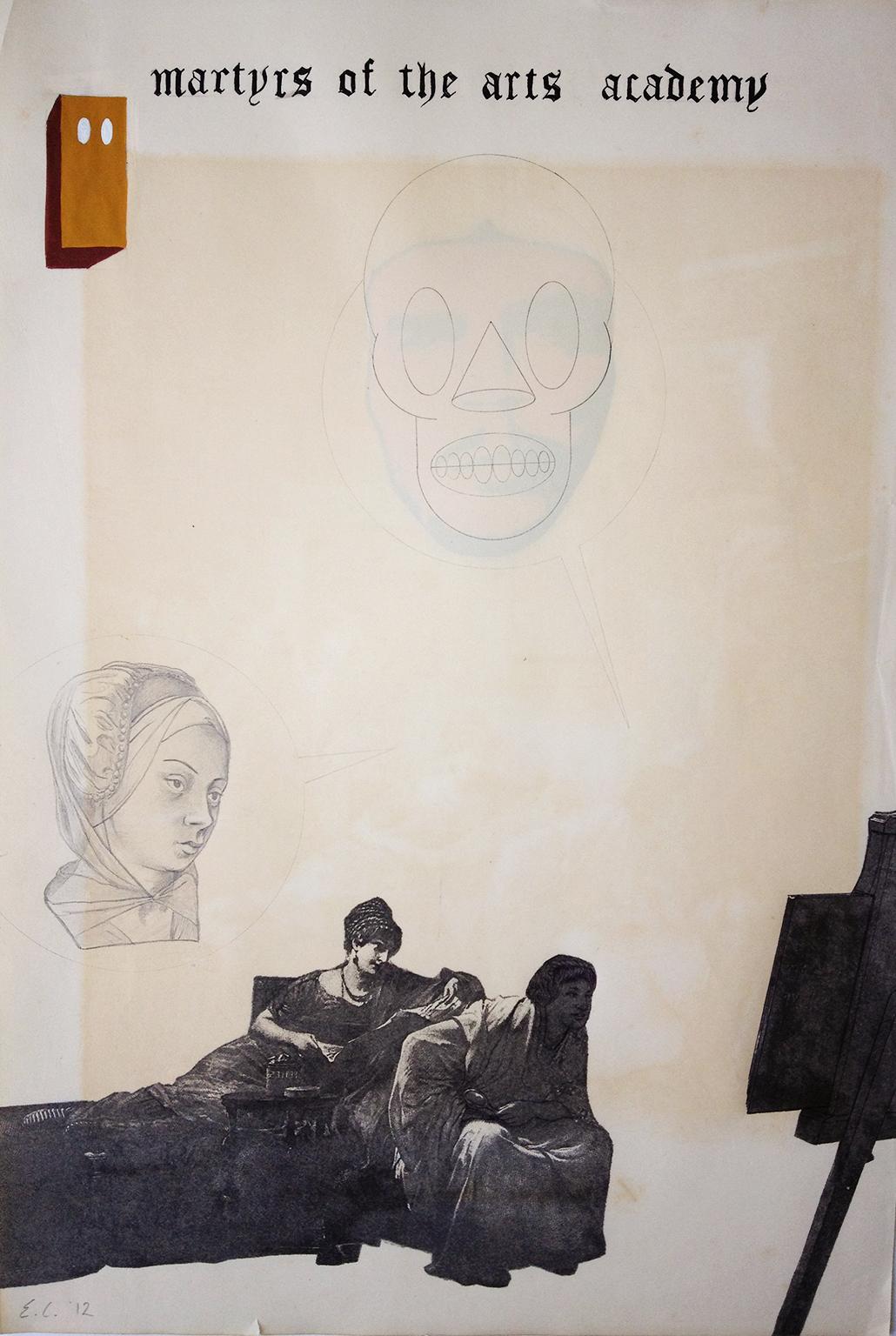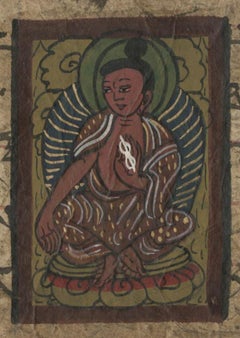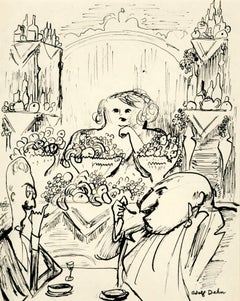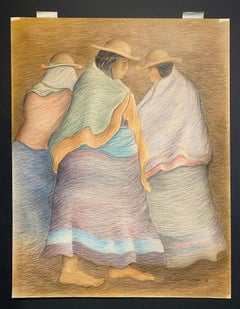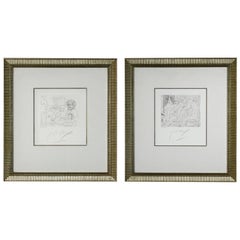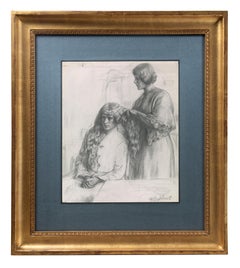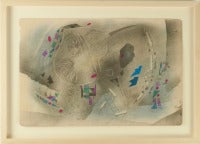
Untitled (non-objective composition with Southwestern motifs)
View Similar Items
Want more images or videos?
Request additional images or videos from the seller
1 of 5
Julio de DiegoUntitled (non-objective composition with Southwestern motifs)July 1947
July 1947
About the Item
- Creator:Julio de Diego (1900-1979, American)
- Creation Year:July 1947
- Dimensions:Height: 11.5 in (29.21 cm)Width: 17.875 in (45.41 cm)
- Period:
- Condition:Small void in image upper left corner, irregular left sheet edge, otherwise very good condition. Archivally framed in a shadow box frame.
- Gallery Location:Fairlawn, OH
- Reference Number:Seller: FA86561stDibs: G131115140328
About the Seller
5.0
Recognized Seller
These prestigious sellers are industry leaders and represent the highest echelon for item quality and design.
Platinum Seller
These expertly vetted sellers are 1stDibs' most experienced sellers and are rated highest by our customers.
Established in 1978
1stDibs seller since 2013
711 sales on 1stDibs
Typical response time: 1 hour
Associations
International Fine Print Dealers Association
More From This SellerView All
- Dharma Prayer Book Manuscript FolioLocated in Fairlawn, OHDharma Prayer Book Manuscript Folio Ink and gouache on handmade paper, 1875-1925) Miniature depicting Tibetan deity Script is Tibetan. Miniature Size: 2 3/8 x 1 ½ inches Part of a se...Category
Early 20th Century Other Art Style Figurative Drawings and Watercolors
MaterialsGouache
- CornucopiaBy Adolf Arthur DehnLocated in Fairlawn, OHSigned by the artist in ink lower right Preliminary sketch in reverse for the 1928 lithograph "Cornucopia," part of Dehn's Paris Lithographs portfolio An unsigned sketch of tw...Category
1920s Figurative Drawings and Watercolors
MaterialsInk
- Two Women and a Child on the Beach at ProvincetownBy Charles DemuthLocated in Fairlawn, OHTwo Women and a Child on the Beach at Provincetown Unsigned. Watercolor on paper, c. 1934 A beautiful Provincetown beach scene, included in the catalogue raisonne. Please see Babcoc...Category
1930s American Modern Drawings and Watercolor Paintings
MaterialsWatercolor
- Read the Signs, No. 13By Darius StewardLocated in Fairlawn, OHRead the Signs, No. 13 Watercolor on Yupo paper, 2013 Signed lower right corner (see photo) Series: Read the Signs (22 watercolors) Exhibited: William Busta Gallery, Read the Signs, ...Category
2010s Contemporary Figurative Drawings and Watercolors
MaterialsWatercolor
- Dharma Prayer Book Manuscript FolioLocated in Fairlawn, OHDharma Prayer Book Manuscript Folio Ink and gouache on handmade paper, 1875-1925) Miniature depicting Tibetan deity Script is Tibetan. Miniature Size: 2 3/8 x 1 ½ inches Part of a se...Category
Early 20th Century Other Art Style Figurative Drawings and Watercolors
MaterialsGouache
- Eileen LakeBy Adolf Arthur DehnLocated in Fairlawn, OHEileen Lake Crayon on paper, early1930's Initialed in pencil lower right (see photo) Titled and annotated verso "Eileen Lake, early 1930s girlfriend" Note: Eileen Hall Lake was an American poet and Adolf Dehn's girlfriend in the early 1930s. Provenance: Estate of the artist By descent Adolf Dehn, American Watercolorist and Printmaker, 1895-1968 Adolf Dehn was an artist who achieved extraordinary artistic heights, but in a very particular artistic sphere—not so much in oil painting as in watercolor and lithography. Long recognized as a master by serious print collectors, he is gradually gaining recognition as a notable and influential figure in the overall history of American art. In the 19th century, with the invention of the rotary press, which made possible enormous print runs, and the development of the popular, mass-market magazines, newspaper and magazine illustration developed into an artistic realm of its own, often surprisingly divorced from the world of museums and art exhibitions, and today remains surprisingly overlooked by most art historians. Dehn in many regards was an outgrowth of this world, although in an unusual way, since as a young man he produced most of his illustrative work not for popular magazines, such as The Saturday Evening Post, but rather for radical journals, such as The Masses or The Liberator, or artistic “little magazines” such as The Dial. This background established the foundation of his outlook, and led later to his unique and distinctive contribution to American graphic art. If there’s a distinctive quality to his work, it was his skill in introducing unusual tonal and textural effects into his work, particularly in printmaking but also in watercolor. Jackson Pollock seems to have been one of many notable artists who were influenced by his techniques. Early Years, 1895-1922 For an artist largely remembered for scenes of Vienna and Paris, Adolf Dehn’s background was a surprising one. Born in Waterville, Minnesota, on November 22, 1895, Dehn was the descendent of farmers who had emigrated from Germany and homesteaded in the region, initially in a one-room log cabin with a dirt floor. Adolf’s father, Arthur Clark Dehn, was a hunter and trapper who took pride that he had no boss but himself, and who had little use for art. Indeed, during Adolf’s boyhood the walls of his bedroom and the space under his bed were filled with the pelts of mink, muskrats and skunks that his father had killed, skinned and stretched on drying boards. It was Adolf’s mother, Emilie Haas Dehn, a faithful member of the German Lutheran Evangelical Church, who encouraged his interest in art, which became apparent early in childhood. Both parents were ardent socialists, and supporters of Eugene Debs. In many ways Dehn’s later artistic achievement was clearly a reaction against the grinding rural poverty of his childhood. After graduating from high school in 1914 at the age of 19—an age not unusual in farming communities at the time, where school attendance was often irregular—Dehn attended the Minneapolis School of Art from 1914 to 1917, whose character followed strongly reflected that of its director, Munich-trained Robert Kohler, an artistic conservative but a social radical. There Dehn joined a group of students who went on to nationally significant careers, including Wanda Gag (later author of best-selling children’s books); John Flanagan (a sculptor notable for his use of direct carving) Harry Gottlieb (a notable social realist and member of the Woodstock Art Colony), Elizabeth Olds (a printmaker and administrator for the WPA), Arnold Blanch (landscape, still-life and figure painter, and member of the Woodstock group), Lucille Lunquist, later Lucille Blanch (also a gifted painter and founder of the Woodstock art colony), and Johan Egilrud (who stayed in Minneapolis and became a journalist and poet). Adolf became particularly close to Wanda Gag (1893-1946), with whom he established an intense but platonic relationship. Two years older than he, Gag was the daughter of a Bohemian artist and decorator, Anton Gag, who had died in 1908. After her husband died, Wanda’s mother, Lizzi Gag, became a helpless invalid, so Wanda was entrusted with the task of raising and financially supporting her six younger siblings. This endowed her with toughness and an independent streak, but nonetheless, when she met Dehn, Wanda was Victorian and conventional in her artistic taste and social values. Dehn was more socially radical, and introduced her to radical ideas about politics and free love, as well as to socialist publications such as The Masses and The Appeal to Reason. Never very interested in oil painting, in Minneapolis Dehn focused on caricature and illustration--often of a humorous or politically radical character. In 1917 both Dehn and Wanda won scholarships to attend the Art Students League, and consequently, in the fall of that year both moved to New York. Dehn’s art education, however, ended in the summer of 1918, shortly after the United States entered World War I, when he was drafted to serve in the U. S. Army. Unwilling to fight, he applied for status as a conscientious objector, but was first imprisoned, then segregated in semi-imprisonment with other Pacifists, until the war ended. The abuse he suffered at this time may well explain his later withdrawal from taking political stands or making art of an overtly political nature. After his release from the army, Dehn returned to New York where he fell under the spell of the radical cartoonist Boardman Robinson and produced his first lithographs. He also finally consummated his sexual relationship with Wanda Gag. The Years in Europe: 1922-1929 In September of 1921, however, he abruptly departed for Europe, arriving in Paris and then moving on to Vienna. There in the winter of 1922 he fell in love with a Russian dancer, Mura Zipperovitch, ending his seven-year relationship with Wanda Gag. He and Mura were married in 1926. It was also in Vienna that he produced his first notable artistic work. Influenced by European artists such as Jules Pascin and Georg Grosz, Dehn began producing drawings of people in cafes, streets, and parks, which while mostly executed in his studio, were based on spontaneous life studies and have an expressive, sometimes almost childishly wandering quality of line. The mixture of sophistication and naiveté in these drawings was new to American audiences, as was the raciness of their subject matter, which often featured pleasure-seekers, prostitutes or scenes of sexual dalliance, presented with a strong element of caricature. Some of these drawings contain an element of social criticism, reminiscent of that found in the work of George Grosz, although Dehn’s work tended to focus on humorous commentary rather than savagely attacking his subjects or making a partisan political statement. Many Americans, including some who had originally been supporters of Dehn such as Boardman Robinson, were shocked by these European drawings, although George Grocz (who became a friend of the artist in this period) admired them, and recognized that Dehn could also bring a new vision to America subject matter. As he told Dehn: “You will do things in America which haven’t been done, which need to be done, which only you can do—as far at least as I know America.” A key factor in Dehn’s artistic evolution at this time was his association with Scofield Thayer...Category
1930s American Realist Figurative Drawings and Watercolors
MaterialsOil Crayon
You May Also Like
- Three WomenLocated in Fresno, CA“Three Women” is an early work of Artist F. John Sierra whose career spans over four decades. He has produced images of the people, lifestyles and challeng...Category
1980s Impressionist Figurative Drawings and Watercolors
MaterialsColor Pencil
- Pair of Etchings V. 3. IX and XIIBy Peter MaxLocated in Rio Vista, CAFantastic pair of Peter Max (American b. 1937) V. 3. IX and XII. In the manner of Picasso each color pencil signed lower center and titled low...Category
Late 20th Century Surrealist Figurative Drawings and Watercolors
MaterialsPaper, Pencil, Color Pencil
$4,000 Sale Price20% Off - 20th century British Drawing - Les Deux Landaises (Evening)By Gerald Leslie BrockhurstLocated in London, GBPencil on paper Signed 'G.L. Brockhurst’ (lower right) Drawn c.1920 Collections: The Fine Art Society, London, 1981; Mr & Mrs Alan Fortunoff, acquired from the above; Private col...Category
20th Century Figurative Drawings and Watercolors
MaterialsPencil
- Eighteenth century Old Master drawing - St JeromeBy John Hamilton MortimerLocated in London, GBPen, ink and wash Framed dimensions: 9 ½ x 11 ¼ inches Drawn c. 1763 This small, powerful study shows St Jerome contemplating the bible with a cross and sk...Category
18th Century Old Masters Figurative Drawings and Watercolors
MaterialsInk, Pen
- Eighteenth century Old Master drawing - Apollo destroying Niobe's childrenBy John Hamilton MortimerLocated in London, GBPen, ink and wash Framed dimensions: 13 x 11 ¼ inches Drawn c.1765 Verso: a study of a hanged man Mortimer has filled this small sheet with action, depicting in the top right, Apollo and Artemis...Category
18th Century Old Masters Figurative Drawings and Watercolors
MaterialsInk, Pen
- Untitled (Sunset Tower Hotel), 2019By Ed TempletonLocated in New York, NYFraming included in listing, free shipping in the US, 14-day return policy. Ed Templeton Untitled (Sunset Tower Hotel), 2019 11 x 8.5 inches Acryli...Category
2010s Contemporary Portrait Drawings and Watercolors
MaterialsAcrylic
Recently Viewed
View AllMore Ways To Browse
Paper Weave
Paper Weaving
Nude Study Drawing
Drawing Female Nude
Vintage French Drawing
American Nude Drawings
Flower Drawing Vintage
Flower Vintage Drawing
Flowers Vintage Drawing
Drawing Vintage Flowers
Charcoal Drawing Study
French Drawings Sketches
Ink Wash Painting
Russian Watercolours
19th Century Original Drawings
Pencil Drawing Large
Cat Drawings
Drawing Cats
